#Indian botany
Text
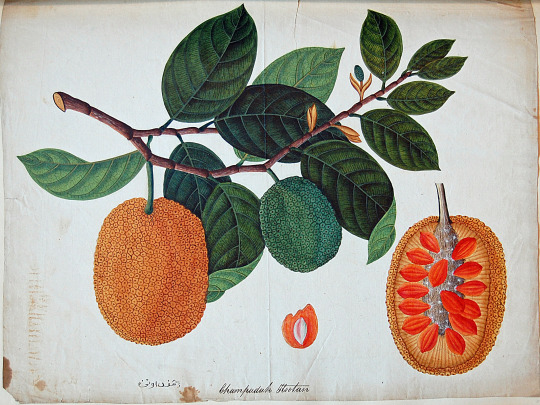
Gouache painting (Calcutta, 19th century) of Artocarpus integer, also known as Chempedak or Champadha.
© The Trustees of the British Museum.
Creative Commons Attribution-NonCommercial-ShareAlike 4.0 International (CC BY-NC-SA 4.0) license.
94 notes
·
View notes
Text

A Handbook of Native American Herbs
#american indians#indigenous peoples#herbs#herbalism#botany#ethnobotany#medicinal plants#herbology#nature#natural medicine#shamanism#health and fitness#alternative therapies#books#🌱#📚
92 notes
·
View notes
Photo

Ghost Pipe by Will Brown on Flickr.
This work is licensed under CC BY 2.0.
#ghost pipe#indian pipe#ghost flower#white#green#flickr#landscape#flowers#wild#wildflowers#creativecommonsplants#creative commons#botany#curators on tumblr#plants#plant blog#plant photography#monotropa uniflora
205 notes
·
View notes
Text

European gooseberry or Ribes grossularia
European gooseberry, is a species of flowering shrub in the currant family, Grossulariaceae. It is native to Europe, the Caucasus and northern Africa. Gooseberry bushes produce an edible fruit and are grown on both a commercial and domestic basis.
Available now on Redbubble
#gooseberries#vintagrafica#redbubble#nature#educational#botany#botanical#cottagecore#biodiversity#indian gooseberry#mother gooseberry#floral#flora fauna#taxonomy
14 notes
·
View notes
Text
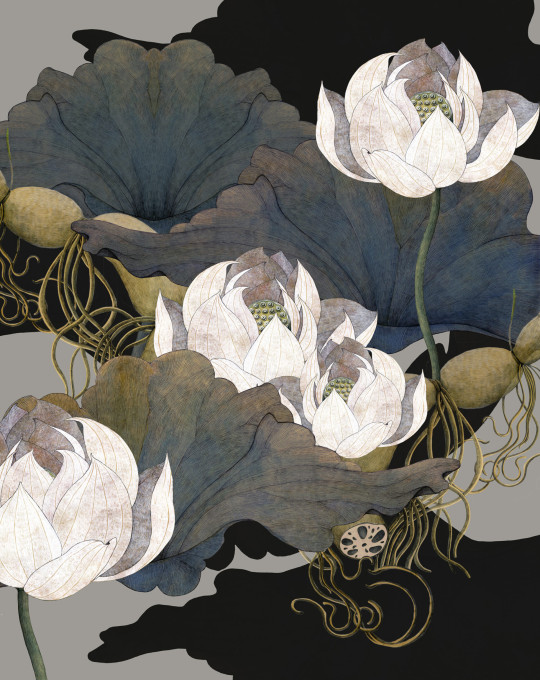
Lina Kusaite
#lotus#Lina Kusaite#Nelumbo nucifera#sacred lotus#Laxmi lotus#Indian lotus#lotus flower#lotus blossom#cocoon characters#floral#flower#botany#botanical#illustrator#eco-artist
20 notes
·
View notes
Text
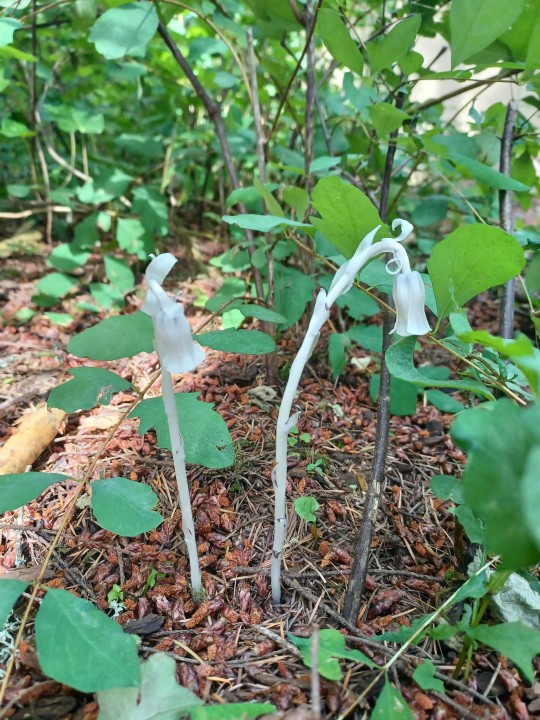
While waiting for students to show up for today's outdoor nature ID class, I found these lovely little ghost pipes (Monotropa uniflora)! This plant is a mycoheterotroph, meaning it saps nutrients from other plants through the mycelium of fungi like Russula and Lactarius species. While you may find patches of these delicate flowers growing together, the patches may be few and far between, so it is best not to pick them.
#plants#ghost pipe#Indian pipe#Monotropa uniflora#mycoheterotroph#nature#botany#rare plants#forest#PNW#pacific northwest
41 notes
·
View notes
Text
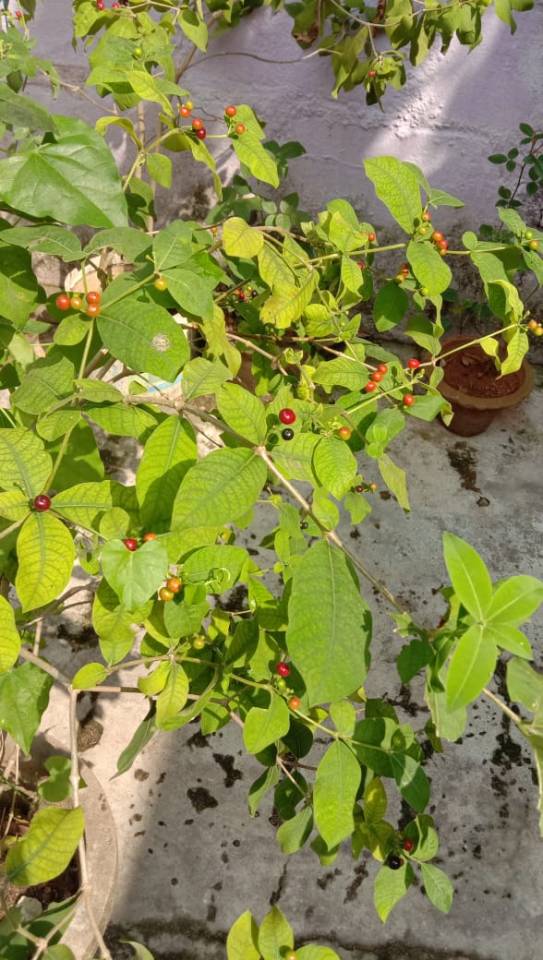

oday's post comes from my friend Selva in India. He has generously shared a culturally important medicinal plant from his native land, the Snakeroot (Rauvolfia serpentina). According to Selva, "Here Snake catchers will catch all varieties of venomous snakes. They are called "Irulas" here. They are tribals. But, they won't say their secrets. We believe that they keep this plant root only for support. They never died by snake bite." Selva also mentioned that locals believe keeping a potted Snakeroot plant in the home will keep snakes away.
The Snakeroot, Devil's Pepper, or Serpentine Wood has a rich variety of plant defence chemicals called "alkaloids". The most notable alkaloid in Snakeroot is chemically identical to the prescription drug "reserpine". Reserpine is used to treat schizophrenia, high blood pressure, and circulation problems.
Dozens of India plant species have been used by locals to treat snake bite for thousands of years, and this anti venom has recently been studied in vitro and in vivo against venom from the Indian Cobra (Naja naja). The research indicates Snakeroot extract neutralises the venom and is less likely to cause allergic reactions in patients. This shows the vast potential for new medicines hidden in the natural world, and why valuing indigenous knowledge and biodiversity is important for humanity's future.
#katia plantscientist#katia plant scientist#india#ayurvedic#herbal medicine#native plants#indian culture#alkaloid#snakes#snakebites#plant biology#plant science#katia hougaard#botany#natural history#snake charmer#indian cobra#antidote#poison type#anti venom#biodiversity#pharmacology#chemistry
6 notes
·
View notes
Text

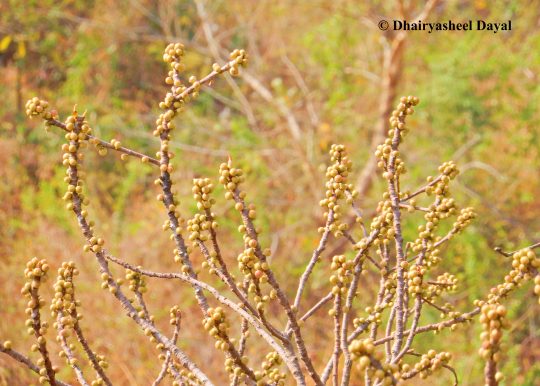
Ficus sp.
#ficus#fig#figs#flora#plants#trees#botany#flora of maharashtra#flora of india#indian flora#flora of western ghats#biodiversity of western ghats#photography#ficus species#fruits
1 note
·
View note
Text
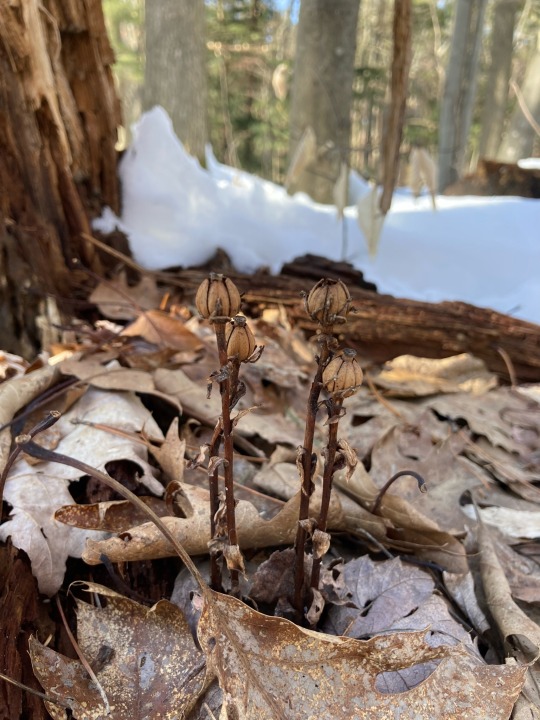
ghost pipe // march 28th, 2023
#puremichigan#nature#original photography#botany#plants#plant blog#ghost pipe#ghost plant#indian pipe#seeds#brown#white#michigan#photographers of tumblr#bay view trail#sleeping bear dunes#winter#spring#march#snow#mine#fleetingfutures
1 note
·
View note
Text

So many books I wanna buy but such a limited budget. Buuuuuuuuut
That’s not why we’re here. We’re here for the featured book,
“Iwígara: the Kinship of Plants and People (American Indian Ethnobotanical Traditions and Science)” by Enrique Salmón
If take a closer look you’ll see “Braiding Sweetgrass” off in the corner. This was the bookshop I originally saw it in, but was sold out of it when I went back for it. I eventually found a copy but browsing the other day I saw it back on their shelves! Good. It’s such a phenomenal book.
This one will eventually make its way into my collection, I’m sure around or after the holiday season when school finally starts to let up and I have more free reading time because humanity really does need to find itself back in touch with the world as a whole if we want to find some peace. We need to preserve what we have. We need to attempt to fix what we can before it’s too late. We need to do better.
#tomework#book review#book blog#want to read#nonfiction#iwígara#the kinship of plants and people#American Indian ethnobotanical traditions and science#plants#people#botany#ethnobotanical traditions#plant science#traditional knowledge
1 note
·
View note
Text
Reading list for Afro-Herbalism:
A Healing Grove: African Tree Remedies and Rituals for the Body and Spirit by Stephanie Rose Bird
Affrilachia: Poems by Frank X Walker
African American Medicine in Washington, D.C.: Healing the Capital During the Civil War Era by Heather Butts
African American Midwifery in the South: Dialogues of Birth, Race, and Memory by Gertrude Jacinta Fraser
African American Slave Medicine: Herbal and Non-Herbal Treatments by Herbert Covey
African Ethnobotany in the Americas edited by Robert Voeks and John Rashford
Africanisms in the Gullah Dialect by Lorenzo Dow Turner
Africans and Native Americans: The Language of Race and the Evolution of Red-Black Peoples by Jack Forbes
African Medicine: A Complete Guide to Yoruba Healing Science and African Herbal Remedies by Dr. Tariq M. Sawandi, PhD
Afro-Vegan: Farm-Fresh, African, Caribbean, and Southern Flavors Remixed by Bryant Terry
Barracoon: The Story of the Last “Black Cargo” by Zora Neale Hurston
Big Mama’s Back in the Kitchen by Charlene Johnson
Big Mama’s Old Black Pot by Ethel Dixon
Black Belief: Folk Beliefs of Blacks in America and West Africa by Henry H. Mitchell
Black Diamonds, Vol. 1 No. 1 and Vol. 1 Nos. 2–3 edited by Edward J. Cabbell
Black Faces, White Spaces: Reimagining the Relationship of African Americans to the Great Outdoors by Carolyn Finney
Black Food Geographies: Race, Self-Reliance, and Food Access in Washington, D.C. by Ashanté M. Reese
Black Indian Slave Narratives edited by Patrick Minges
Black Magic: Religion and the African American Conjuring Tradition by Yvonne P. Chireau
Black Nature: Four Centuries of African American Nature Poetry edited by Camille T. Dungy
Blacks in Appalachia edited by William Turner and Edward J. Cabbell
Caribbean Vegan: Meat-Free, Egg-Free, Dairy-Free Authentic Island Cuisine for Every Occasion by Taymer Mason
Dreams of Africa in Alabama: The Slave Ship Clotilda and the Story of the Last Africans Brought to America by Sylviane Diouf
Faith, Health, and Healing in African American Life by Emilie Townes and Stephanie Y. Mitchem
Farming While Black: Soul Fire Farm’s Practical Guide to Liberation on the Land by Leah Penniman
Folk Wisdom and Mother Wit: John Lee – An African American Herbal Healer by John Lee and Arvilla Payne-Jackson
Four Seasons of Mojo: An Herbal Guide to Natural Living by Stephanie Rose Bird
Freedom Farmers: Agricultural Resistance and the Black Freedom Movement by Monica White
Fruits of the Harvest: Recipes to Celebrate Kwanzaa and Other Holidays by Eric Copage
George Washington Carver by Tonya Bolden
George Washington Carver: In His Own Words edited by Gary Kremer
God, Dr. Buzzard, and the Bolito Man: A Saltwater Geechee Talks About Life on Sapelo Island, Georgia by Cornelia Bailey
Gone Home: Race and Roots through Appalachia by Karida Brown
Ethno-Botany of the Black Americans by William Ed Grime
Gullah Cuisine: By Land and by Sea by Charlotte Jenkins and William Baldwin
Gullah Culture in America by Emory Shaw Campbell and Wilbur Cross
Gullah/Geechee: Africa’s Seeds in the Winds of the Diaspora-St. Helena’s Serenity by Queen Quet Marquetta Goodwine
High on the Hog: A Culinary Journey from Africa to America by Jessica Harris and Maya Angelou
Homecoming: The Story of African-American Farmers by Charlene Gilbert
Hoodoo Medicine: Gullah Herbal Remedies by Faith Mitchell
Jambalaya: The Natural Woman’s Book of Personal Charms and Practical Rituals by Luisah Teish
Just Medicine: A Cure for Racial Inequality in American Health Care by Dayna Bowen Matthew
Leaves of Green: A Handbook of Herbal Remedies by Maude E. Scott
Like a Weaving: References and Resources on Black Appalachians by Edward J. Cabbell
Listen to Me Good: The Story of an Alabama Midwife by Margaret Charles Smith and Linda Janet Holmes
Making Gullah: A History of Sapelo Islanders, Race, and the American Imagination by Melissa Cooper
Mandy’s Favorite Louisiana Recipes by Natalie V. Scott
Medical Apartheid: The Dark History of Medical Experimentation on Black Americans from Colonial Times to the Present by Harriet Washington
Mojo Workin’: The Old African American Hoodoo System by Katrina Hazzard-Donald
Motherwit: An Alabama Midwife’s Story by Onnie Lee Logan as told to Katherine Clark
My Bag Was Always Packed: The Life and Times of a Virginia Midwife by Claudine Curry Smith and Mildred Hopkins Baker Roberson
My Face Is Black Is True: Callie House and the Struggle for Ex-Slave Reparations by Mary Frances Berry
My Grandmother's Hands: Racialized Trauma and the Pathway to Mending Our Hearts and Bodies by Resmaa Menakem
On Her Own Ground: The Life and Times of Madam C.J. Walker by A'Lelia Bundles
Papa Jim’s Herbal Magic Workbook by Papa Jim
Places for the Spirit: Traditional African American Gardens by Vaughn Sills (Photographer), Hilton Als (Foreword), Lowry Pei (Introduction)
Post Traumatic Slave Syndrome by Dr. Joy DeGruy
Rooted in the Earth: Reclaiming the African American Environmental Heritage by Diane Glave
Rufus Estes’ Good Things to Eat: The First Cookbook by an African-American Chef by Rufus Estes
Secret Doctors: Ethnomedicine of African Americans by Wonda Fontenot
Sex, Sickness, and Slavery: Illness in the Antebellum South by Marli Weiner with Mayzie Hough
Slavery’s Exiles: The Story of the American Maroons by Sylviane Diouf
Soul Food: The Surprising Story of an American Cuisine, One Plate at a Time by Adrian Miller
Spirituality and the Black Helping Tradition in Social Work by Elmer P. Martin Jr. and Joanne Mitchell Martin
Sticks, Stones, Roots & Bones: Hoodoo, Mojo & Conjuring with Herbs by Stephanie Rose Bird
The African-American Heritage Cookbook: Traditional Recipes and Fond Remembrances from Alabama’s Renowned Tuskegee Institute by Carolyn Quick Tillery
The Black Family Reunion Cookbook (Recipes and Food Memories from the National Council of Negro Women) edited by Libby Clark
The Conjure Woman and Other Conjure Tales by Charles Chesnutt
The Home Place: Memoirs of a Colored Man’s Love Affair with Nature by J. Drew Lanham
The Jemima Code: Two Centuries of African American Cookbooks by Toni Tipton-Martin
The President’s Kitchen Cabinet: The Story of the African Americans Who Have Fed Our First Families, from the Washingtons to the Obamas by Adrian Miller
The Taste of Country Cooking: The 30th Anniversary Edition of a Great Classic Southern Cookbook by Edna Lewis
The Tuskegee Syphilis Study: An Insiders’ Account of the Shocking Medical Experiment Conducted by Government Doctors Against African American Men by Fred D. Gray
Trace: Memory, History, Race, and the American Landscape by Lauret E. Savoy
Vegan Soul Kitchen: Fresh, Healthy, and Creative African-American Cuisine by Bryant Terry
Vibration Cooking: Or, The Travel Notes of a Geechee Girl by Vertamae Smart-Grosvenor
Voodoo and Hoodoo: The Craft as Revealed by Traditional Practitioners by Jim Haskins
When Roots Die: Endangered Traditions on the Sea Islands by Patricia Jones-Jackson
Working Conjure: A Guide to Hoodoo Folk Magic by Hoodoo Sen Moise
Working the Roots: Over 400 Years of Traditional African American Healing by Michelle Lee
Wurkn Dem Rootz: Ancestral Hoodoo by Medicine Man
Zora Neale Hurston: Folklore, Memoirs, and Other Writings: Mules and Men, Tell My Horse, Dust Tracks on a Road, Selected Articles by Zora Neale Hurston
The Ways of Herbalism in the African World with Olatokunboh Obasi MSc, RH (webinar via The American Herbalists Guild)
1K notes
·
View notes
Photo
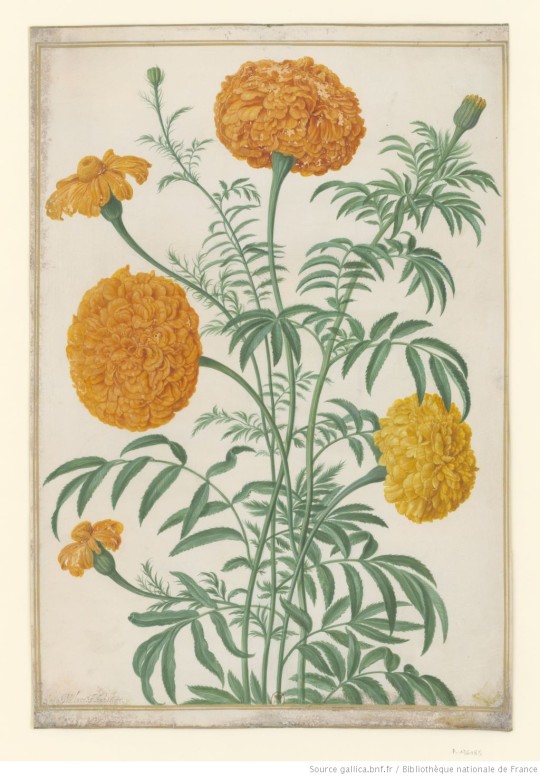
Rose d'Inde (Indian rose) 1655 by Johann Walter (1604-1677).
Bibliothèque nationale de France, département Estampes et photographie.
108 notes
·
View notes
Text

It's a big mess of hubris; the manipulative use of scientific language to legitimate/validate the status quo; Victorian/Gilded Age notions of resource extraction; the "rightness" of "land improvement"; and the inevitability of empire.

This was published in the United States one year before the massacre at Wounded Knee.
This was the final year-ish of the so-called "Indian Wars" when the US was "completing" its colonization of western North America; at the beginning of the Gilded Age and the zenith of power for industrial/corporate monopolies; when Britain, France, and the US were pursuing ambitious mega-projects across the planet like giant canals and dams; just as the US was about to begin its imperial occupations in Central America and Pacific islands; during the height of the "Scramble for Africa" when European powers were carving up that continent; with the British Empire at the ultimate peak of its power, after the Crown had taken direct control of India; in the years leading up to mass labor organizing and the industrialization of war precipitating the mass death of the two world wars.
This was also the time when new academic disciplines were formally professionalized (geology; anthropology; archaeology; ecology).
Classic example of Victorian-era (and emerging modernist and twentieth-century) imperial hubris which implies justification for its social hierarchies built on resource extraction and dispossession by invoking both emerging technical engineering prowess (trains, telegraphs, electricity) and the in-vogue scientific theories widely popularized at the time (Lyell's work, dinosaurs, and the geology discipline granting new understanding of the grand scale of deep time; Darwin's work and ideas of biological evolution; birth of anthropology as an academic discipline promoting the idea of "natural" linear progression from "savagery" to imperial civilization; the technical "efficiency" of monoculture/plantations; emerging systems ecology and new ideas of biogeographical regions).
While also simultaneously doing the work to, by implication, absolve them of ethical complicity/responsibility for the cruelty of their institutions by naturalizing those institutions (excusing the violence of wealth disparities, poverty, crowded factory laboring conditions, mass imprisonment, copper mines, South Asian famine, the industrialization of war eventually manifesting in the Great War, etc.) by claiming that "commerce is a science"; "pursuit of profit is Natural"; "empire is inevitable".
This tendency to invoke science as justification for imperial hegemony, whether in Britain in the 1880s or the United States in the 1920s and such, might be a continuation of earlier European ventures from the sixteenth to eighteenth centuries which included the use of cartography, surveying/geography, Linnaean taxonomy, botany, and natural history to map colonies/botanical resources and build/justify plantations and commercial empires in the Portuguese slave ports, Dutch East Indies, or the Spanish Americas.
Some of the issues at play:
-- Commerce is "A Science". Commerce is shown to be both an ecological system (by illustrating it as if it were a landscape, which is kinda technically true) and a physiological system (by equating infrastructure/extraction networks with veins) suggesting wealth accumulation is Natural.
-- If commerce/capitalism are Natural, then evolutionary theory and linear histories suggest it is also Inevitable (it was not mass violence of a privileged few humans who spent centuries beating the Earth into submission to impose the Victorian/Gilded Age state of things, it was in fact simply a natural evolutionary progression). And if wealth accumulation is Natural, then it is only Right to pursue "land improvement".
-- US/European hubris. They can claim to perceive the planet in its apparent totality (as a globe, within the bounds of extraterrestrial space as if it were a laboratory or plantation). The planet and all its lifeforms are an extension of their body, implying a justified dominion.
-- However, their anxiety and suspicions about the stability of empire are belied by their fear of collapse and the simultaneous US/European obsession at the time with ancient civilizations, the "fall of Rome", classical ruins, etc. At this time, the professionalization of the field of archaeology had helped popularize images and stories of Sumer, Egypt, the Bronze Age, the Aegean, Rome, etc. And there was what Ann Stoler has called an "imperialist nostalgia" and a fascination with ancient ruins, as if Britain/US were heirs to the legacy of Athens and Rome. You can see elements of this in the turn of the century popularity of Theosophy/spiritualism, or the 1920s revival of "classical" fashions. This historicism also popularized a sort of "linear narrative" of history/empires, reinforced by simultaneous professionalization of anthropology, which insinuated that humans advance from a "primitive" state towards modernity's empires.
-- Meanwhile, from the first decades of the nineteenth century when Megalosaurus and Iguanodon helped to popularize fascination with dinosaurs, Georgian and later Victorian Britain became familiar with deep time and extinction, which probably contributed to British anxiety about extinction, imperial collapse, lastness, and death.
-- Simultaneously, the massive expansion of printed periodicals allowed for sensationalist narrativizing of science.
-- The masking of the cruelty in a euphemism like "land improvement". Like sentencing someone to a de facto slow death and deprivation in a prison but calling it a "sanatorium" or "reformatory". Or calling the mass amounts of poor, disabled, women, etc. underclasses of London "unfortunates". Whether it's Victorian Britain or early twentieth century United States: "Our empire is doing this for the betterment and advancement of all mankind."
-- If an ecosystem is conceived as a machine, "land improvement" actually means monoculture, high-density production, resource extraction, concentration.
-- The image depicts the body is itself is also a mere machine (dehumanization, etc.). And if human bodies are shown to be also systems, networks, machines like an ecosystem, then human bodies can also be concentrated for efficiency and productivity (literal concentration camps, prisons, factories, company towns, slums, dosshouses, etc.). This is the thinking that reduces humans and other creatures to objects, resources, to be concentrated and converted into wealth.
And so after the rise of railroads and coal-power and industrial factories in the earlier nineteenth century, the fin de siecle and Edwardian era then saw the expansion of domestic electricity, easier photography, telephones, radio, and automobiles. But you also witness the spread of mass imprisonment, warplanes, and machine guns, etc. And in the midst of this, the Victorian/Gilded Age also saw the rise of magazines, newspapers, mass media, pop-sci stuff, etc. So this wider array of published material, including visual stuff like maps and infographics could "win over" popular perception. This is nearly a century after the Haitian Revolution, so more and more people would have been able to witness and call out the contradictions and hypocrisies of these "civilized" nations, so scientific validation was important to empire's public image. (Think: 100 years prior, everyone witnessed widespread revolutions and slave rebellions, but now the European empires are still using indentured labor, expanding prisons, and growing even more powerful in Africa, etc. An outrage.)
Illustrations like this ...
It's people with power (or people with a vested interest in these institutions, people who aspire to climbing the social ladder, people who defend the status quo) looking around at the general state of things, observing all of the cruelty and precarity, and then using scientific discourses to concede and say "this was inevitable, this was natural" and not only that, but also "and this is good".
Related reading:
Peoples on Parade: Exhibitions, Empire, and Anthropology in Nineteenth-Century Britain (Sadiah Qureshi, 2011); The Earth on Show: Fossils and the Poetics of Popular Science, 1802-1856 (Ralph O’Connor); "Science in the Nursery: the popularisation of science in Britain and France, 1761-1901" (Laurence Talairach-Vielmas, 2011); Citizens and Rulers of the World: The American Child and the Cartographic Pedagogies of Empire (Mashid Mayar); "Viewing Plantations at the Intersection of Political Ecologies and Multiple Space-Times" (Irene Peano, Marta Macedo, and Collette Le Petitcrops); “Paradise Discourse, Imperialism, and Globalization: Exploiting Eden" (Sharae Deckard); "Forgotten Paths of Empire: Ecology, Disease, and Commerce in the Making of Liberia's Plantation Economy" (Gregg Mitman, 2017); Imperial Debris: On Ruins and Ruination (Ann Laura Stoler, 2013)
Fairy Tales, Natural History and Victorian Culture (Laurence Talairach-Vielmas, 2014); Mining the Borderlands: Industry, Capital, and the Emergence of Engineers in the Southwest Territories, 1855-1910 (Sarah E.M. Grossman, 2018); Pasteur’s Empire: Bacteriology and Politics in France, Its Colonies, and the World (Aro Velmet, 2022); "Shaping the beast: the nineteenth-century poetics of palaeontology" (Talairach-Vielmas, 2013); In the Museum of Man: Race, Anthropology, and Empire in France, 1850-1960 (Alice Conklin, 2013); Inscriptions of Nature: Geology and the Naturalization of Antiquity (Pratik Chakrabarti, 2020)
90 notes
·
View notes
Photo
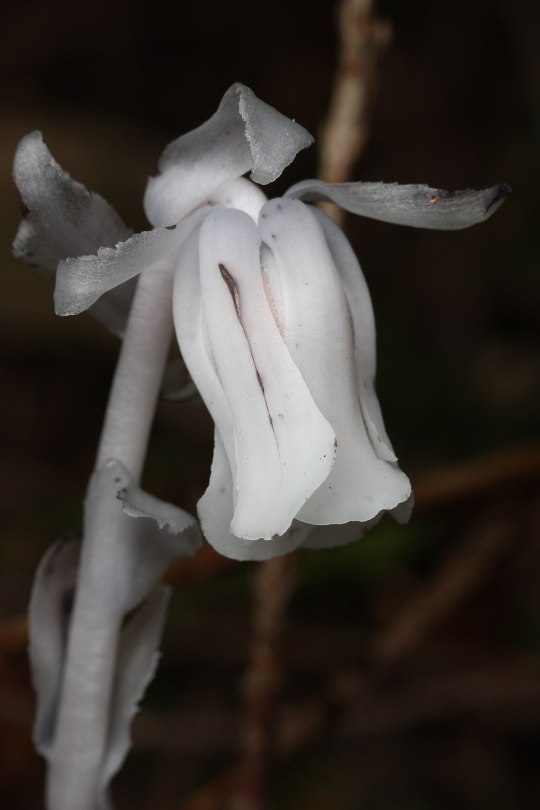
Ghost Pipe by Walter Siegmund on Wikimedia Commons.
This work is licensed under CC BY-SA 3.0.
#monotropa uniflora#ghost pipe#ghost plant#indian pipe#flowers#portrait#wild#creative commons#creativecommonsplants#curators on tumblr#botany#plants#plant blog#plant photography#white
31 notes
·
View notes
Text









The Princess Royal’s Official Engagements in October 2023
02/10 As President of the Riding for the Disabled Association visited Avon Riding Centre, to mark its 40th Anniversary. 🐴🥳
03/10 Held two Investiture ceremonies at Windsor Castle. 🎖️
With Sir Tim As Patron of the Minchinhampton Centre for the Elderly, visited Horsfall House, Minchinhampton. 👵🏻👴🏻
04/10 In Cornwall Princess Anne visited;
Origin Coffee in Porthleven. ☕️
Camborne School of Mines at the Penryn Campus of University of Exeter, in Penryn. 🔨
St Ewe Free Range Eggs Packing Centre in Truro. 🥚
05/10 As Colonel of The Blues and Royals (Royal Horse Guards and 1st Dragoons), attended a Household Cavalry Medal Parade at Powle Lines, Picton Barracks in Wiltshire. 🫡
07/10 With Sir Tim Attended the Scotland vs Ireland Rugby World Cup match at the Stade de France in Paris. 🏴🇮🇪🇫🇷🏉
09/10 As Patron of Livability, visited Livability Millie College in Poole. 🏫
As Patron of UK Youth, visited Avon Tyrrell Outdoor Activity Centre in Bransgore. 🧗♀️
10/10 Attended a Future of UK Food Systems Seminar held by Crops for the Future at the National Institute of Agricultural Botany in Cambridge. 🚜
As Commandant-in-Chief (Youth) of St. John Ambulance, opened the new Ambulance Hub in Castle Donington. 🚑
11/10 Held two investiture ceremonies at Windsor Castle. 🎖️
Unofficial, Sir Tim attended the opening of the New Zealand Liberation Museum, Te Arawhata, in Le Quesnoy, France. 🇫🇷🇳🇿
As Patron of Scots in London Group attended a Reception at St Columba’s Church of Scotland. 🏴
Attended a Blue Seal Club Dinner at the Cavalry and Guards Club in Piccadilly, London. 🤵♂️
12/10 As Patron of the Campaign for Gordonstoun, chaired a Cabinet Meeting at the Lansdowne Club, London. 🏫
As Patron of English Rural Housing Association, attended a Parish Council Rural Housing Conference at Eversholt Hall, Bedfordshire. 🏡
Visited the Aircraft Research Association in Bedford. ✈️
As Grand Master of the Royal Victorian Order, attended Evensong and a Reception at The King’s Chapel of the Savoy, London. 🎶
14/10 Sir Tim represented Princess Anne, Patron of the Wiltshire Horn Society, at a dinner on the occasion of their centenary. 🐑
15/10 As Member of the International Olympic Committee, and Chairman of the International Olympic Committee Members Election Commission, attended the first day of the 141st International Olympic Committee Session in Mumbai, India. 🇮🇳
16/10 As Member of the International Olympic Committee, and Chairman of the International Olympic Committee Members Election Commission, attended the second day of the 141st International Olympic Committee Session in Mumbai, India. 🇮🇳
Attended an IOC Reception at Jio World Centre. 🌏
17/10 As Member of the International Olympic Committee, and Chairman of the International Olympic Committee Members Election Commission, attended the third day of the 141st International Olympic Committee Session in Mumbai, India. 🇮🇳
Visited the Commonwealth War Graves Commission Bombay 1914-1918 Memorial at the Indian Sailors’ Home, in Mumbai. 🪖
Attended a reception at the residence of His Majesty’s Trade Commissioner for South Asia and Deputy High Commissioner for Western India in Mumbai. 🌏
Unofficial Sir Tim attended a memorial service for Lord Lawson (former Chancellor of the Exchequer) at St. Margaret’s church in Westminster ⛪️
19/10 Hosted a Reception with the King, Queen and the Duchess of Edinburgh at Buckingham Palace to thank those who contributed to and were involved with the State Funeral of The late Queen Elizabeth II and with the Coronation of Their Majesties. 🥂
With Sir Tim, As Colonel-in-Chief of the Royal Army Veterinary Corps attended the launch of the Corps History Book at the National Army Museum in London. 📚
With Sir Tim, As Patron of the Royal Navy and Royal Marines Charity, attended the Trafalgar Night Dinner at the Old Royal Naval College in Greenwich, London. 🤵♀️🤵♂️
20/10 Opened Cutbush and Corrall Charity almshouse accommodation in Maidstone.
Opened the Royal British Legion Industries Centenary Village, Greenwich House, in Aylesford, Kent.
As Patron of the Butler Trust, visited HM Prison Elmley.
24/10 Held an Investiture at Windsor Castle. 🎖️
As President of the English-Speaking Union of the Commonwealth, delivered the Evelyn Wrench Lecture at Dartmouth House in London. 🏴
25/10 In Scotland Princess Anne visited;
The International Society for Optics and Photonics Photonex Exhibition at Scottish Event Campus in Glasgow. 🔍
As President of Victim Support Scotland, visited the National Office-West in Glasgow. 🫂
Peter Equi and Sons Limited Ice Cream Manufacturer. 🍦
26/10 Opened the National Honey Show at Sandown Park Racecourse in Esher, Surrey. 🍯 🐝
As Royal Patron of the Security Institute, this afternoon attended the Annual Conference at the Royal Society of Medicine in London. ⛓️
With Sir Tim As President of the Royal Yachting Association, attended a 50th Anniversary of the Yachtmaster Scheme Dinner at Trinity House, London. 🛥️🍽️
27/10 Held an Investiture at Buckingham Palace. 🎖️
31/10 In Scotland;
As Patron of the Moredun Foundation, attended a Conference at Moredun Research Institute, Pentlands Science Park, in Penicuik. 🧬
As Royal Patron of the Leuchie Forever Fund, attended a Reception to launch Leuchie House’s new strategy in Edinburgh. 🏡
As Chancellor of the University of Edinburgh, held a Chancellor’s Dinner at the Palace of Holyroodhouse. 👩🎓
Total official engagements for Anne in October: 47
2023 total so far: 400
Total official engagements accompanied by Tim in October: 6
2023 total so far: 81
#a busy bee#princess anne#princess royal#tim laurence#timothy laurence#unofficial engagement count 2023#october 2023
57 notes
·
View notes
